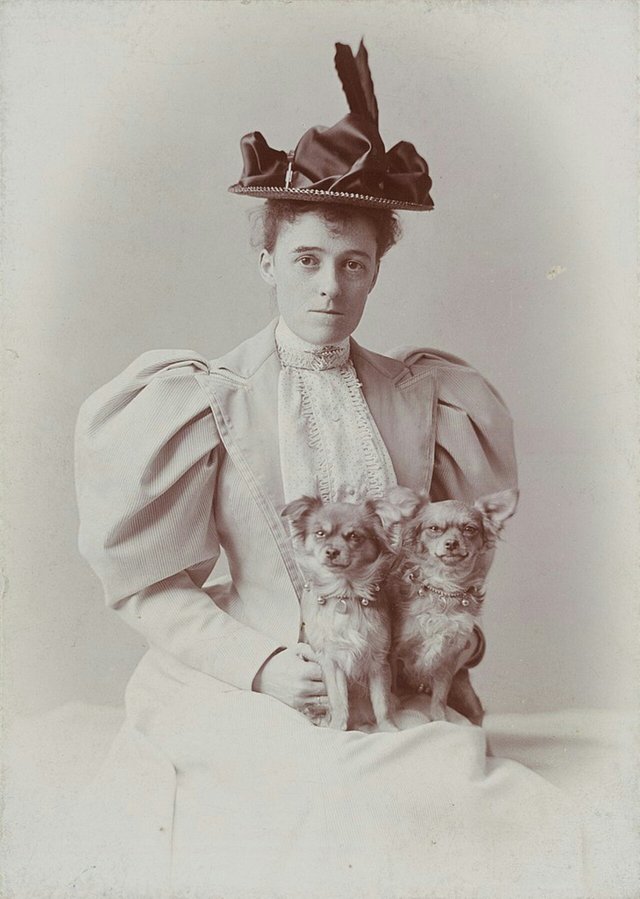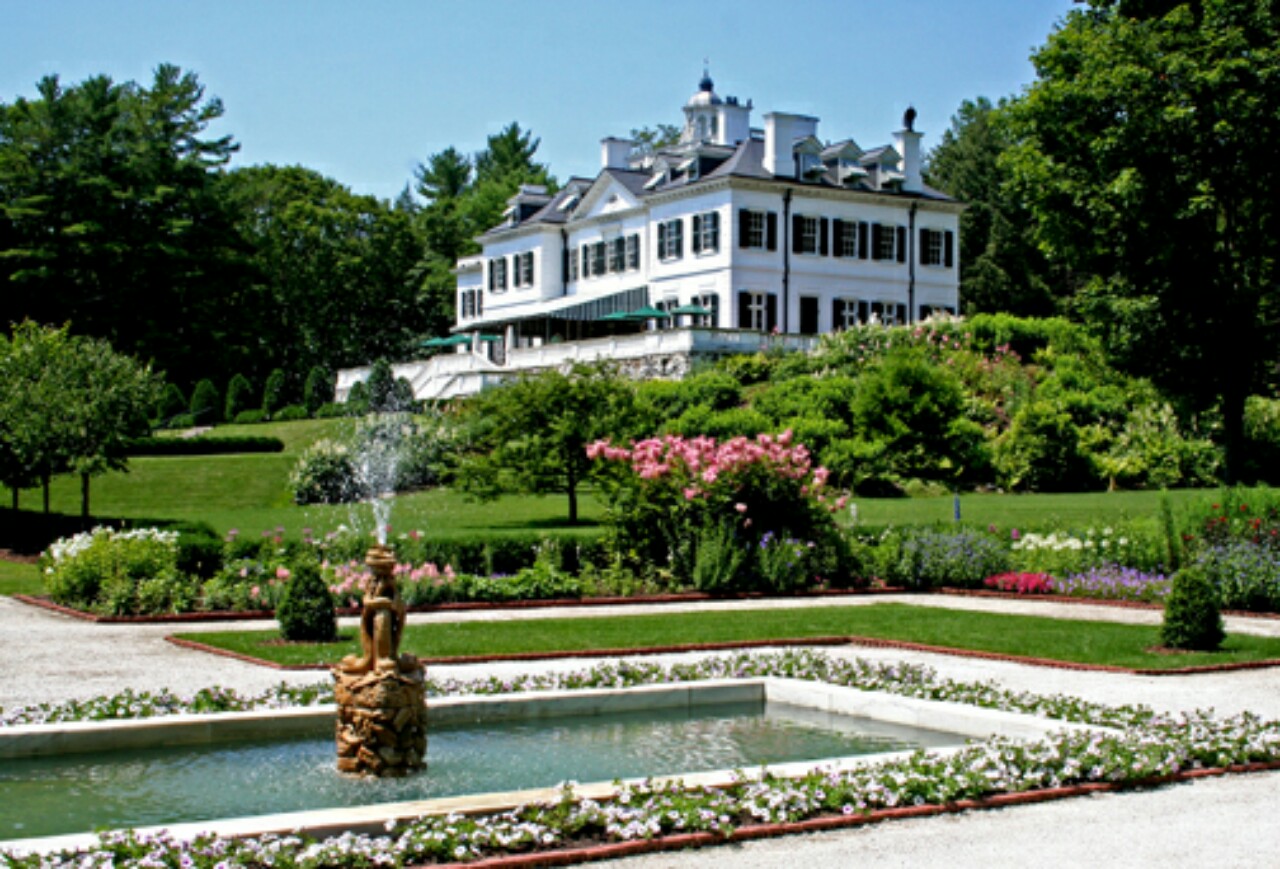“New Year’s Day” - Edith Wharton and Architecture? A Persuasive Essay
“New Year’s Day” - Edith Wharton and Architecture?
A Persuasive Essay
At first blush, Edith Wharton, the book she authored -
“New Year’s Day” and the study of architecture appear totally unrelated.
And after reading the book, readers soon discover that neither architecture, nor architectural styles are given nothing more than a casual, cursory observation.
Consequently, most readers will agree with the following appraisal:
The likelihood of any connections between “New Year’s Day”, Edith Wharton and architecture are tenuous, at best.
The book focuses on the developing inner thoughts of a young man - from childhood to young adulthood - who is severely infactuated with a woman named Mrs. Lizzie Hazeldean; a woman rumored to be engaging in an illicit affair with a single man named Henry Prest.
“New Year’s Day” is filled with detailed descriptions of the style of dress, the appropriate and accepted behavior - ultra-conservative by today's standards, the emergence of changing social values, and the interior decorative designs of the time.
In contrast to the popular notion of zero connectedness between the book, the author, and architecture, I will present facts in this essay that may persuade you to think otherwise.
Furthermore, I submit to you that Edith Wharton's inherent, scrupulous attention to the decorative details and design of her times epitomizes Edith Wharton’s special connection to architecture.
Born Edith Newbold Jones on January 24, 1862 in New York and passing away on August 11, 1937 at the age of 75 in Saint-Brice-sous-Forêt, France, Edith Wharton was a Pulitzer Prize-winning Novelist and short story writer.
Nominated for the Nobel Prize in Literature in 1927, 1928 and 1930, Edith Wharton is known for her insightful, humorous, and colorful descriptions of American high society in the late 18th and early 19th century.
But it is her other area of expertise; that is, interior design, that solidly links her to architecture - even making major contributions to both fields of study.
Edith Wharton’s precise observations of decor and design exemplified in “New Year’s Day” hints towards her real life struggles to solve incongruities between the interior living areas of a building and its surrounding architectural style.
The importance of symmetry and coherence is graphically illustrated by an excerpt from the book: “The most perilous coquetry may not be in a woman’s way of arranging her dress but in her way of arranging her drawing-room.”
Just like the characters of the book, Edith Wharton constantly wrestled with what she saw as the glaring disparity between exterior architecture and interior decor.
For example, Edith had a great disliking of what she thought was the blatant exterior and interior dissonance among the houses and cottages of Newport, Rhode Island. The buildings were renowned for their Victorian architectural style, but usually were decorated internally with a totally opposite design style.
Her life-long goal was to merge interior design with internal and external architecture. An example of this is “The Mount”, a country style estate located in the city of Lenox, Massachusetts. Edith designed the house and surrounding grounds’ landscaping scheme and it was completed in 1902; referring to The Mount as her first “real home”.
The main house on The Mount Estate is a multi-storied structure (its west entry is three stories high and its garden side has two stories) and is predominantly of the “Anglo-Dutch” architectural style with nuances from the classical Italian and French architecture.
The “Anglo-Dutch” style happens to be the same architectural style of the Belton House, a 17th century country house in Lincolnshire, England, and the inspiration for The Mount’s main house. Edith Wharton and her husband, Edward Wharton, lived in that house for twenty years from 1902 to 1922.
The following years after the Whartons left the house until 1980 saw it being used as a private domicile, a Foxhollow School for Girls’ dormitory, and the Shakespeare & Company’s theater site.
Later, the Edith Wharton Restoration organization bought it and gradually restored it and most of its surrounding property to its original condition.
From 1971 (the year that The Mount was declared a National Historic Landmark) to the present day, The Mount has served as a historic house museum and popular cultural arts center; averaging 40,000 visitors per year.
Edith Wharton’s exacting nature is evident in all her literary works and every association with each architect . But of course, architects historically had egos as large as Edith Wharton’s capacity for stubbornness and passion for perfection.
In the minds of the architects of Edith's times and accepted as fact by the public, architects were creative geniuses; and therefore, supposedly able to design anything. Consequently, they believed this entitled them the innate, exclusive right to be left alone to design and build their sole masterpieces.
Edith Wharton would have none of that nonsense. She demanded collaboration and to the dismay of many architects, actively engaged at every step of the creative and construction process.
In fact, there are quotes from her memoirs that Edith’s micro-managing tendencies compelled her to constantly order the architects around “to do this or to do that”; stretching the limits of normal human patience among the architects and designers of her circle of creative collaborators.
Additionally, Edith Wharton wrote in her memoirs, “I was always vaguely frightened by ugliness.”
She believed that good architecture included order, scale, and harmony - all the way down to the details of its interior; an overall, beautiful sum of congruity that spanned the whole spectrum of size, level of complexity, and proportion of scale.
As an interior design expert, Edith Wharton vehemently believed that design and architecture were inescapably intertwined, not the two distinct disciplines so commonly espoused throughout all the current, influential universities.
Like most, Edith Wharton had her own set of personal preferences. But unlike the masses of non-affluent people, she had the wherewithal (i.e., social prominence, money, and influential friends like Theodore Roosevelt) to bring her personal preferences to fruition.
In short, Edith wanted to control everything and most of the time Edith got her way.
Eventually she met Ogden Codman, a famous architect of her time who shared her views of the inseparable nature of design and architecture. That is, that decorating design should be a branch of architecture. Together they wrote the ground-breaking book “The Decoration of Houses” in 1897.
The book discusses Wharton and Codman’s mutual abhorrence to the glut of clutter from the Gilded Age and rallied for the reinstatement of classical principles like symmetry, proportion, and elemental coherence.
“The Decoration of Houses” has sixteen chapters and is 198 pages long.
Many times throughout “The Decoration of Houses”, Wharton and Codman advise the readers to be vigilant for any signs of ugly, tacky mixing and matching of styles and advocating a return to classical design principles.
They adamantly espoused avoiding insidious tendencies towards eclectic decor that most surely will result in a jumble of unrelated designs and architecture.
“The Decoration of Houses” is regarded as a powerful, revolutionary and timely contribution to the study of both architecture and interior design. The book is still popular today and universally recognized as a seminal work in both architecture and interior design disciplines.
Its popularity has led to a whole generation of elite, high-caliber professionals - both in design and architecture - that operate with the powerful, yet elegant, tenets submitted by Wharton and Codman in “The Decoration of Houses”.
Clearly then, although at the outset, any link between Edith Wharton’s “New year’s Day” and architecture seemed implausible; a rigorous inspection of the historical facts yields a very different picture.
Her philosophy of meticulously atteding to the slightest of details and aligning everything within, on and around a structure to create a tapestry of coherent, symmetrical beauty continues to manifest in the work of modern day architects, landscape designers and interior decorators.
When you consider everything put forth in this essay, there should be no doubt that Edith Wharton had a lifelong connection - and a resolute devotion - to architecture.
By JaiChai
About the Author
He is a retired U.S. Military veteran. Believing that school was too boring, he dropped out of High School early; only to earn an A.A., B.S., and MBA in less than 4 years much later in life – while working full-time as a Navy/Marine Corps Medic. In spite of a fear of heights and deep water, he freefall parachuted out of airplanes and performed diving ops in very deep, open ocean water. He spends his days on an island paradise with his teenage daughter, longtime girlfriend and three dogs.




